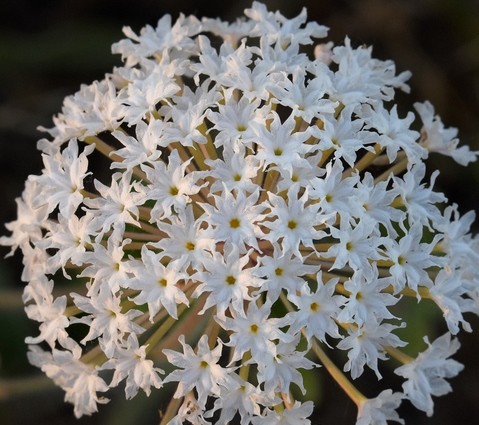Transmontane sand-verbena
(Abronia turbinata)

Description
Abronia turbinata is a species of flowering plant in the four o'clock family known by the common name transmontane sand-verbena. It is native to eastern California and Oregon and western Nevada, where it grows in desert and plateau scrub. This is an erect or spreading herb, usually an annual, approaching 50 centimeters in maximum stem height or length. It produces several thick green leaves which are somewhat oval to nearly round and a few centimeters wide. Inflorescences arise from the stem on peduncles of several centimeters and hold hemispheric or spreading clusters of up to 35 white to pinkish flowers. Each small flower in the cluster is a narrow tube up to 2 centimeters long which abruptly spreads into a lobed corolla. The fruit is a few millimeters long and has hollow, inflated wings. Abronia turbinata is a species of Magnoliopsida described by John Torrey and Sereno Watson. Abronia turbinata belongs to the genus Abronia, and the family Nyctaginaceae. None of these subspecies are listed. Abronia, the sand-verbenas or wild lantanas, is a genus of about 20 species of annual or perennial herbaceous plants in the family Nyctaginaceae. Despite the common names, they are not related to Verbena (vervains) or lantanas in the family Verbenaceae. They are closely allied with Tripterocalyx. They are native to western North America, from Alberta and Saskatchewan, Canada, south to west Texas, California, Baja California and central Mexico, growing on dry sandy soils. Abronia macrocarpa, a Texas endemic, is protected under the Endangered Species Act. Abronia ammophila, the Yellowstone sand verbena, is a plant unique to Yellowstone National Park's lakeshores and is endemic to the park. Only a few species are widespread, and many are quite rare. They make very attractive garden plants for hot, dry sandy sites.
Taxonomic tree:







